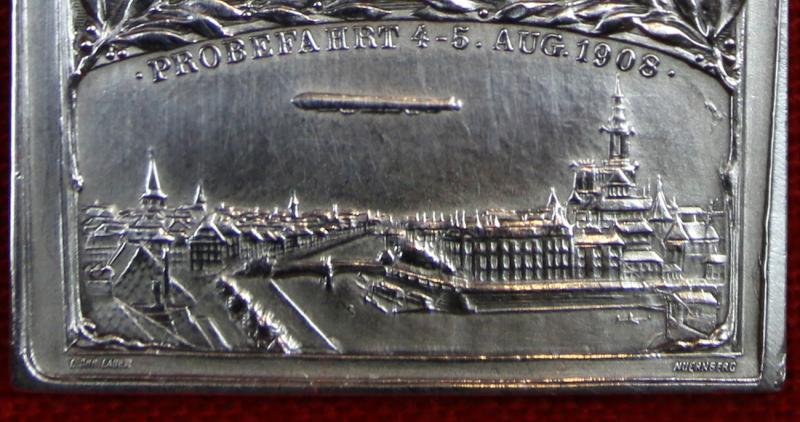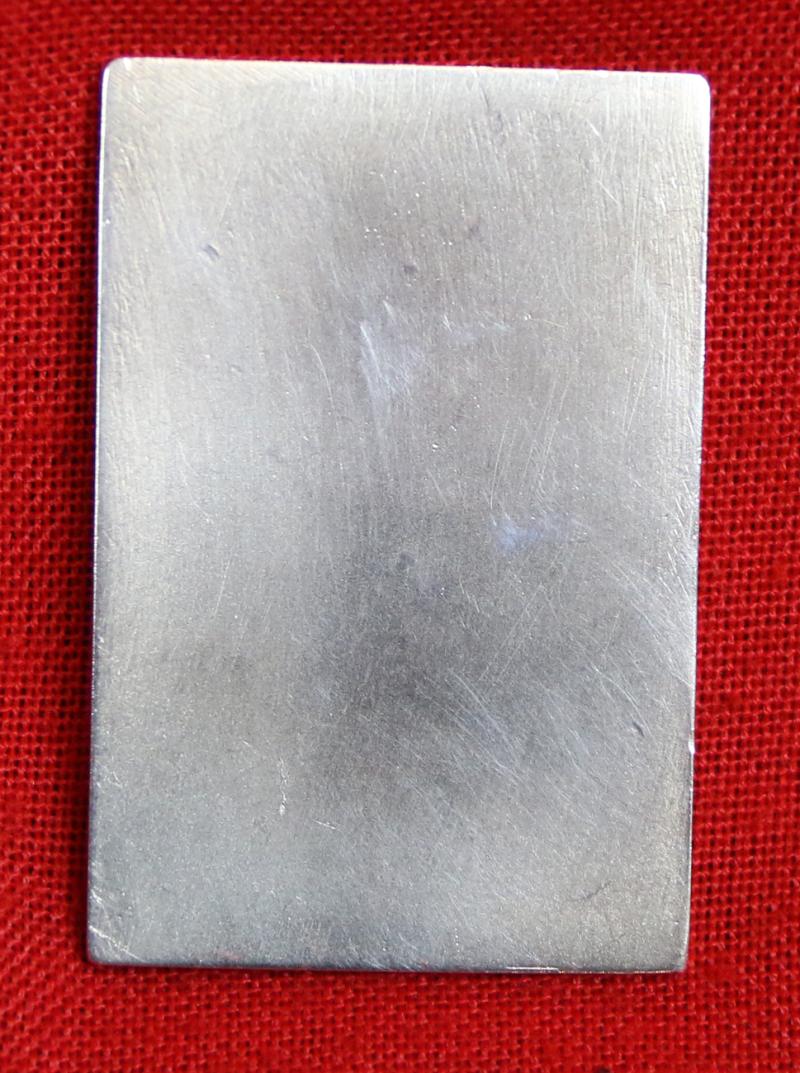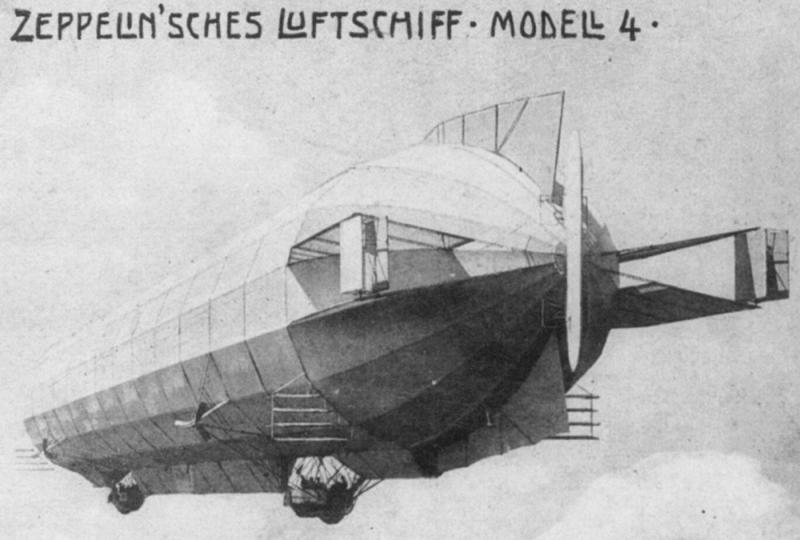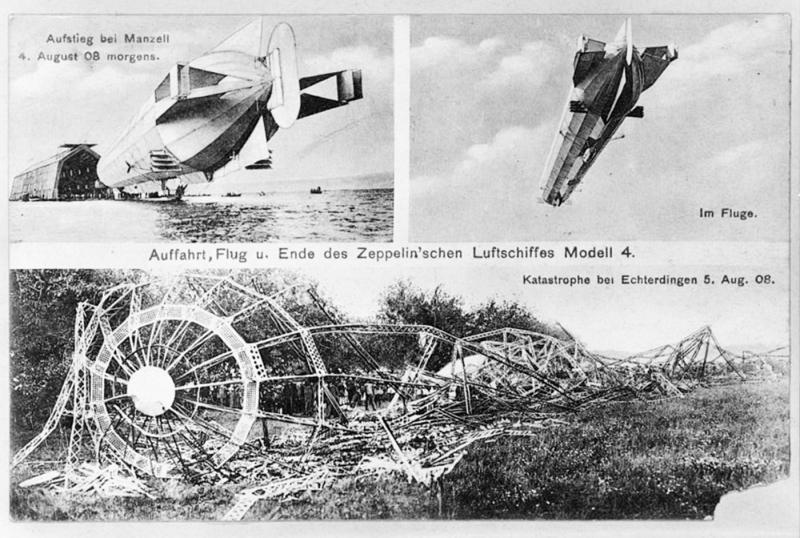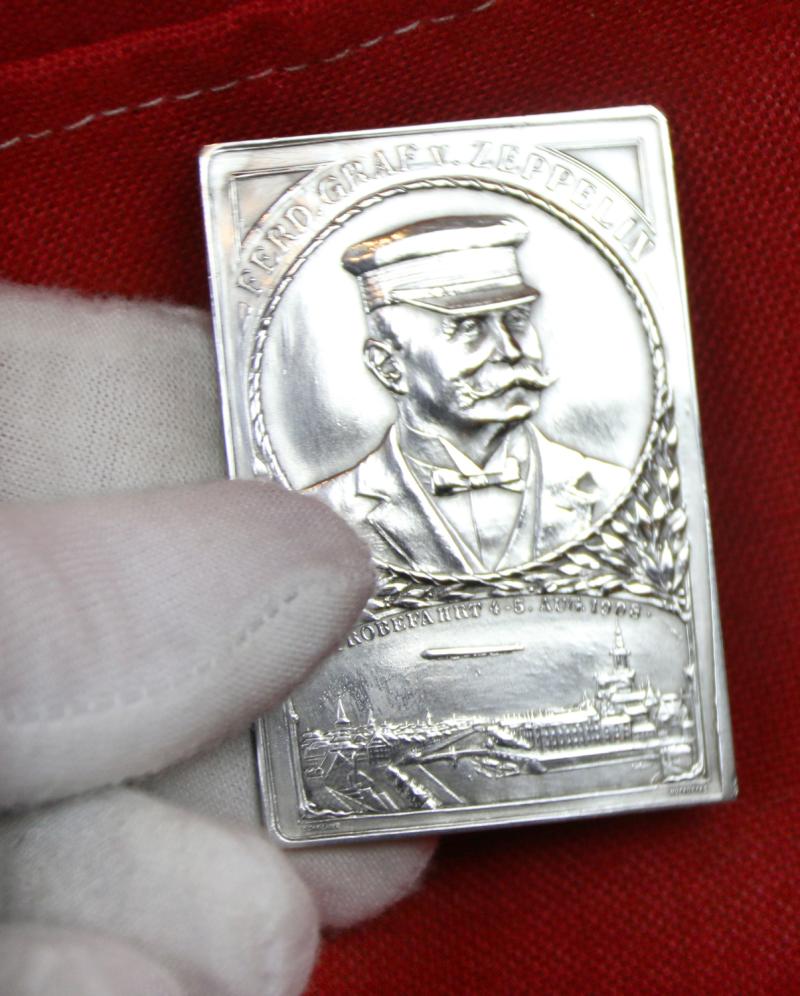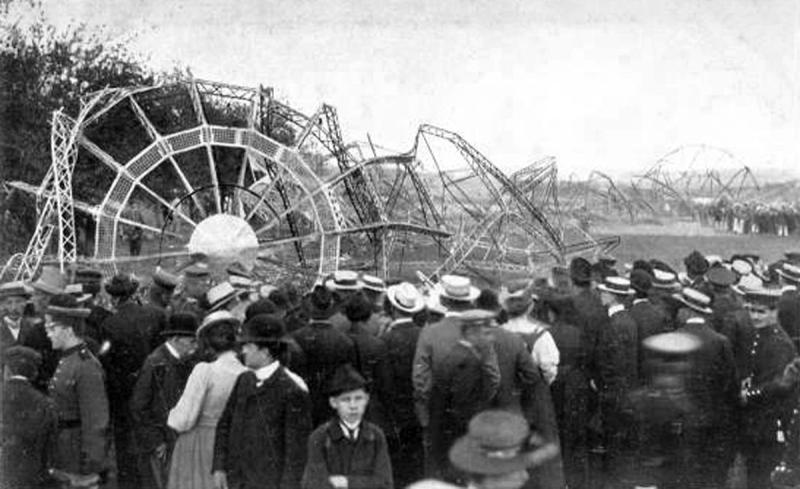A Very Rare, Near Mint Condition Aeronautical Table Medal for The Graf Zeppelin LZ 4 Dirigible Test Flight To Strasbourg. Hallmarked Silver, {990} Plaque. Dated August 4th 5th 1908, For The Crew Of The Zeppelin That Exploded On Its Test Flight. By Lauer
Graf Zeppelin LZ 4 Dirigible 2 day Test Flight to Strasbourg Silver medal plaque August 1908. Hallmarked 990 silver on the edge, and maker marked by Ludwig Christian Lauer within the frontal design.
Silver plaque medal for presentation of the flight, but the flight was interrupted by several serious issues, which grounded the Zeppelin mid flight, but whereupon it was blown from its mooring, caught fire, and exploded.
The trial flight finally started on 4 August 1908, when the LZ 4 lifted off at 06:22 in the morning, carrying 12 people and sufficient fuel for 31 hours of flight. The flight to Zürich had excited considerable public interest, and large crowds gathered along the route to witness the flight, which took it over Konstanz, Schaffhausen, Basel and Strasbourg. Shortly after passing Strasbourg the forward engine had to be stopped since the fuel tank in the engine gondola had been exhausted, and needed to be refilled. At this point the airship was flying light due to the heat of the sun having caused the hydrogen to expand, and was being held at a low altitude by dynamic downforce generated by flying in a nose-down attitude: with the loss of the power of one engine, it rose to an altitude of 820 m (2,690 ft), venting gas from the relief valves as it did so. At 1:58 p.m the aft engine had to be stopped for refuelling: this time the airship rose to 884 m (2,900 ft), with a further loss of hydrogen. Two further engine stoppages caused further loss of gas: by now LZ 4 was only being kept in the air by dynamic lift generated by flying with a nose-up attitude, the resultant drag reducing its speed to 16 km/h (9.9 mph), and at 5:24 pm a landing was made on the Rhine near Oppenheim, 23 kilometres (14 mi) short of Mainz. All superfluous items and five crew members were unloaded, and the flight was resumed at 10:20. Mainz was reached half an hour later, and the ship turned to begin its return journey. Further engine problems followed: a crank bearing in the forward engine melted at 1:27 am, reducing airspeed to about 32 km/h (20 mph) and it was decided to land to have the engine repaired by engineers from the Daimler works at Untertürkheim. Accordingly, LZ 4 was set down at 7:51 am at Echterdingen.
The airship was tethered and engineers removed the forward engine to make repairs, but during the afternoon LZ 4 was torn from its moorings by a gust of wind. The soldiers present as a ground handling party could not hold it down, but it was brought to earth by a crew member who had remained on board. Unfortunately, the ship came into contact with a half-dead pear tree while landing, which damaged some of the gasbags, and it immediately caught fire. The cause of ignition was later ascribed to a static charge being produced when the rubberised cotton of the gasbags was torn.
The disaster took place in front of an estimated 40 to 50 thousand spectators and produced an extraordinary wave of nationalistic support for Zeppelin's work. Unsolicited donations from the public poured in: enough had been received within 24 hours to rebuild the airship, and the eventual total was over 6 million marks were donated, at last providing Zeppelin with a sound financial base for his experiments.
Made by Ludwig Christian Lauer was a medal maker in Nuremberg, Germany. He began his business in 1848. He expanded his business and in 1860 renamed it ‘coin mint L. Chr. Lauer’. He died in 1873 and the company continued under the supervision of his wife and three sons.
He was a leading 19th-century German manufacturer of medals
55mm x 36mm, 43 grams of 990 silver
Code: 25602
595.00 GBP


